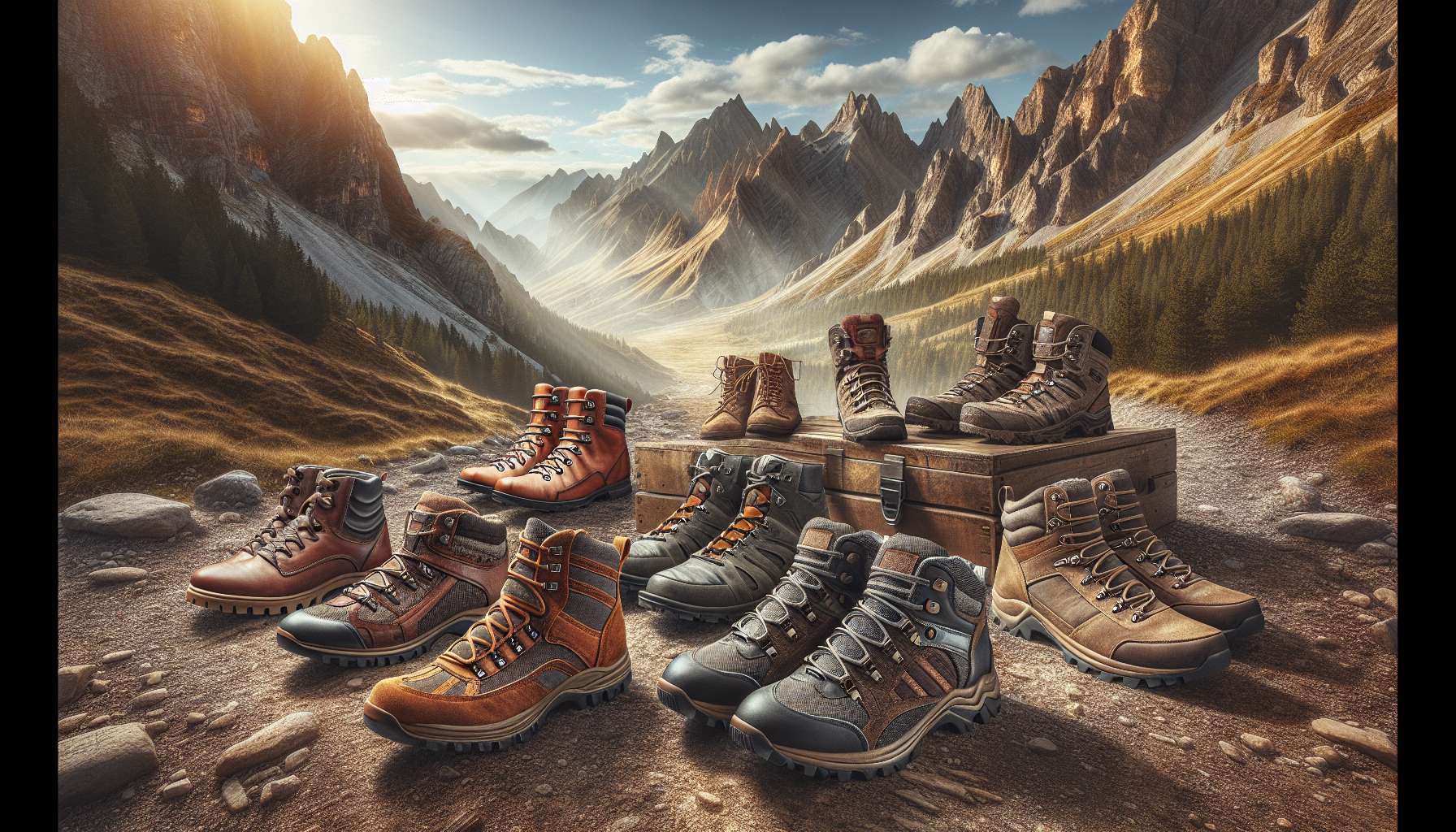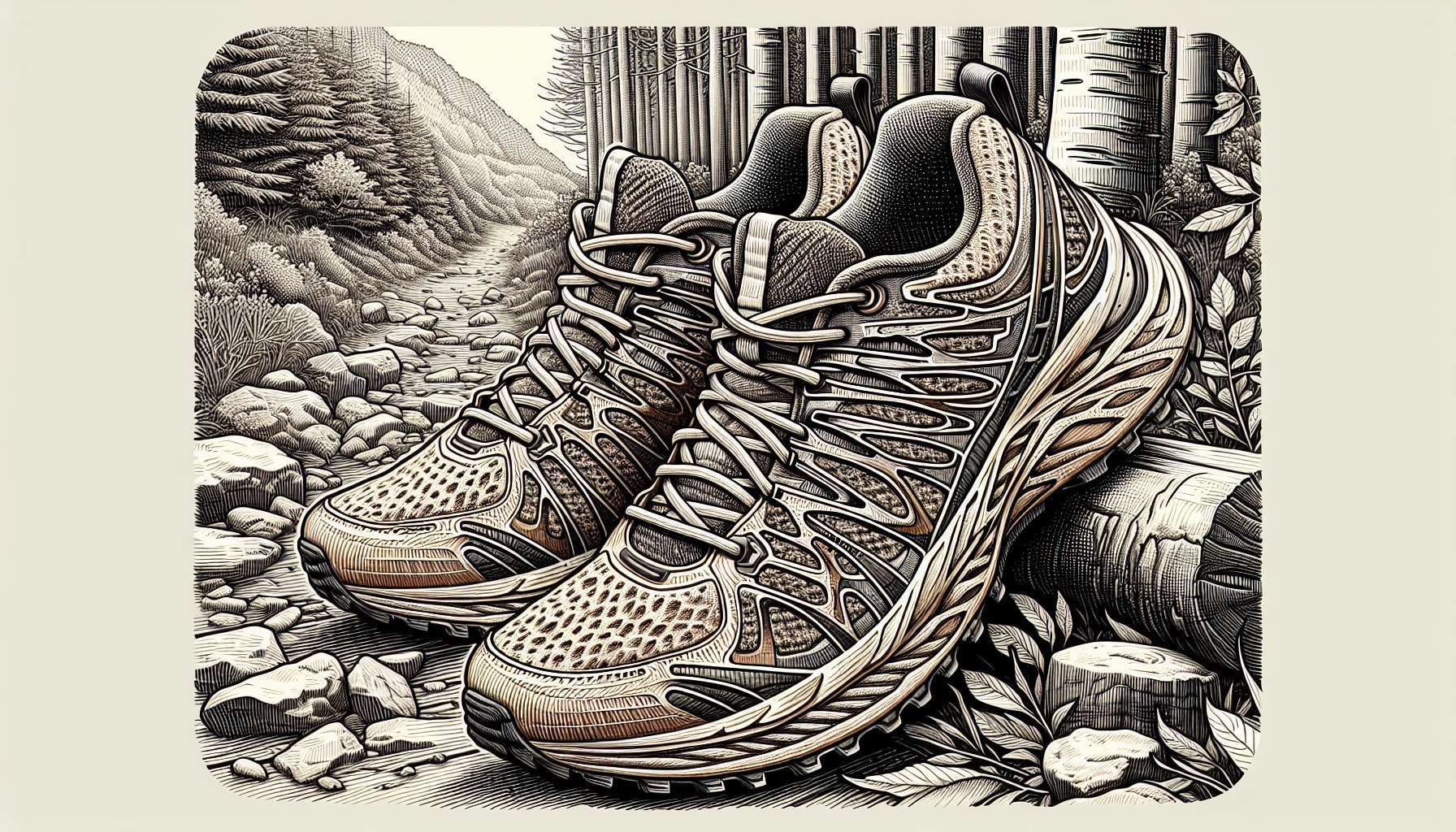The Ultimate Guide to Climbing Boots: Essential Gear for Every Adventurer
When it comes to outdoor adventures, having the right gear can make all the difference between a successful climb and a challenging struggle. Among the essential equipment for any climber, climbing boots play a crucial role in providing stability, support, and protection in rugged terrain. Whether you’re a seasoned mountaineer or a beginner looking to explore the great outdoors, understanding the importance of climbing boots is key to ensuring a safe and enjoyable experience. In this comprehensive guide, we will delve into the world of climbing boots, exploring their history, design, features, and importance in the realm of outdoor activities.
The Evolution of Climbing Boots

From humble beginnings as simple leather footwear to the advanced technical designs of today, climbing boots have undergone a remarkable evolution over the years. The earliest climbing boots date back to the 19th century when climbers relied on sturdy leather boots with hobnail soles for traction on rocky surfaces. These traditional boots provided basic protection and support, but as climbing techniques and equipment evolved, so did the design of climbing boots.
In the mid-20th century, the introduction of Vibram rubber soles revolutionized the industry, offering climbers superior grip and durability. This innovation paved the way for modern climbing boots that feature a combination of leather, synthetic materials, and advanced technologies to enhance performance and comfort. Today, climbers can choose from a wide range of specialized boots designed for different types of climbing, from alpine expeditions to rock climbing and bouldering.
The Anatomy of Climbing Boots
Understanding the key components of climbing boots is essential for selecting the right pair for your adventures. A typical climbing boot consists of several essential parts that work together to provide stability, support, and protection:
1. Upper:
The upper portion of a climbing boot is typically made of leather, synthetic materials, or a combination of both. This part of the boot provides protection against abrasions, rocks, and other elements encountered during climbs. The upper also plays a crucial role in determining the overall fit and comfort of the boot.
2. Sole:
The sole of a climbing boot is responsible for providing traction and stability on various surfaces. Modern climbing boots feature Vibram rubber soles with specialized tread patterns that offer excellent grip on rocks, ice, and slippery terrain. The sole also provides cushioning and shock absorption to reduce fatigue during long climbs.
3. Lacing System:
The lacing system of a climbing boot is designed to provide a secure and adjustable fit. Different lacing systems, such as traditional laces, speed lacing, or Boa systems, offer climbers the flexibility to customize the fit of their boots based on their preferences and the demands of the terrain.
4. Rand:
The rand is a protective rubber layer that wraps around the base of the boot, providing added durability and protection against rocks and sharp objects. Rands are particularly important for alpine climbing and mountaineering where boots are subjected to harsh conditions and rough terrain.
5. Midsole:
The midsole of a climbing boot is located between the outsole and the insole and is responsible for providing stiffness and support. A supportive midsole helps distribute weight evenly and prevents fatigue during climbs, especially on challenging routes that require precise footwork.
Types of Climbing Boots
There are several types of climbing boots designed to cater to different styles of climbing and terrain. Understanding the characteristics and features of each type is essential for choosing the right boot for your specific needs:
1. Mountaineering Boots:
Mountaineering boots are designed for high-altitude expeditions, glacier travel, and extreme cold conditions. These boots feature rigid soles, insulated liners, and crampon-compatible designs to provide maximum support and warmth in harsh environments.
2. Alpine Boots:
Alpine boots are versatile all-rounders that are suitable for a variety of alpine climbing activities, from snow and ice routes to mixed rock and ice climbs. These boots are lighter and more flexible than mountaineering boots but still offer excellent support and protection.
3. Rock Climbing Shoes:
Rock climbing shoes are specialized footwear designed for technical rock climbing and bouldering. These shoes feature sticky rubber soles, downturned shapes, and snug fits to provide climbers with maximum sensitivity and precision on small edges and footholds.
4. Approach Shoes:
Approach shoes are hybrid footwear that combine the features of hiking boots and climbing shoes. These shoes are ideal for hiking to climbing sites and scrambling over rocky terrain, offering climbers the comfort and traction they need for the approach and descent.
Choosing the Right Climbing Boots
When selecting climbing boots, there are several factors to consider to ensure a proper fit and optimal performance:
1. Fit:
The fit of climbing boots is crucial for comfort and stability on the mountain. Boots should provide a snug yet comfortable fit without any pressure points or slippage. It’s essential to try on different boots and sizes to find the perfect fit for your feet.
2. Terrain:
The type of terrain you will be climbing on will influence the choice of boots. For technical rock climbs, you may need specialized rock climbing shoes with sticky rubber soles, whereas alpine climbs may require insulated mountaineering boots with crampon compatibility.
3. Support:
The level of support provided by climbing boots is crucial for preventing injuries and fatigue. Boots with stiff soles and supportive midsoles are ideal for long climbs and routes that require precision footwork.
4. Waterproofing:
For climbs in wet or snowy conditions, waterproof climbing boots are essential to keep your feet dry and comfortable. Look for boots with Gore-Tex or other breathable membranes that offer protection against moisture while allowing sweat to escape.
Expert Opinions
We reached out to seasoned climbers and industry experts to get their insights on the importance of climbing boots in outdoor pursuits:
Climbing boots are a critical piece of gear that can make or break a climb. Having the right boots that fit well and provide the necessary support and traction can give you the confidence to conquer challenging routes and enjoy the experience to the fullest. – Alex Honnold, Professional Rock Climber.
As a mountaineer, I rely on my climbing boots to keep me safe and comfortable in extreme conditions. The durability, warmth, and stability of my boots are essential for tackling high-altitude peaks and technical routes. – Ed Viesturs, Renowned Mountaineer.
Common Misconceptions about Climbing Boots
There are several misconceptions surrounding climbing boots that can impact the choices climbers make when selecting footwear:
1. Myth: Heavy boots are always better for climbing.
While mountaineering boots are often heavier due to their insulation and support, lighter boots can be just as effective for certain types of climbs, especially in warmer conditions or on technical rock routes where agility is key.
2. Myth: Breaking in boots is unnecessary.
Breaking in climbing boots is essential to ensure a proper fit and prevent blisters and discomfort on the mountain. Taking the time to wear your boots around the house or on short hikes before a big climb can make a significant difference in comfort and performance.
Comparative Analysis
Let’s compare two popular climbing boots on the market to see how they stack up in terms of features, performance, and price:
1. La Sportiva Nepal Cube GTX:
The La Sportiva Nepal Cube GTX is a top-of-the-line mountaineering boot designed for technical ice and mixed climbing. It features a Gore-Tex lining, Vibram sole, and insulated design for superior performance in cold and wet conditions. While on the pricier side, this boot is a favorite among serious mountaineers for its durability and reliability.
2. Scarpa Vapor V:
The Scarpa Vapor V is a popular rock climbing shoe known for its precision fit and sensitivity. It features a downturned shape, sticky rubber sole, and Velcro closure for quick adjustments. This shoe is ideal for steep sport climbs and bouldering where a high level of precision is required. With a more moderate price point compared to mountaineering boots, the Scarpa Vapor V is a favorite among climbers looking for performance and value.
FAQs (Frequently Asked Questions) about Climbing Boots
Q: What is the difference between mountaineering boots and alpine boots?
A: Mountaineering boots are designed for high-altitude expeditions and extreme cold conditions, with rigid soles and crampon compatibility. Alpine boots are more versatile and suitable for a variety of alpine climbing activities, offering a balance of support and flexibility.
Q: How often should climbing boots be replaced?
A: Climbing boots should be replaced when they show signs of significant wear and tear, such as delamination, worn soles, or loss of support. On average, climbing boots last for 300-500 miles of use, but individual factors such as terrain, frequency of use, and maintenance can affect their lifespan.
To Wrap Things Up
Climbing boots are a fundamental piece of gear for any outdoor enthusiast, providing the support, stability, and protection needed to tackle challenging climbs and adventures. By understanding the key features, types, and considerations when selecting climbing boots, you can ensure a comfortable and successful experience in the mountains. Whether you’re a beginner or a seasoned climber, investing in quality climbing boots is essential for enjoying the great outdoors to the fullest.




